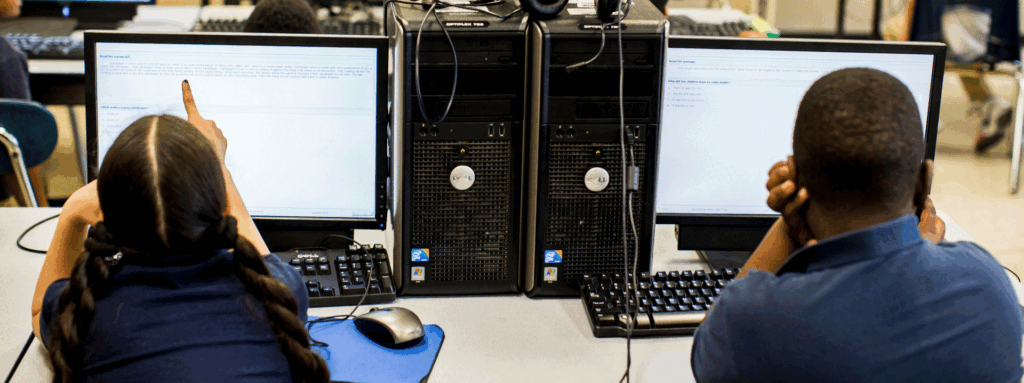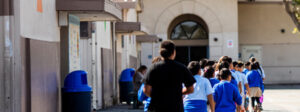One day in early October, a student raised her hand and said, “Mrs. Bonilla, I’m really worried about the killer clowns I see all over the news.”
That day in class, it seemed the only thing my tenth graders could talk about was the killer clown story. As they filled me in on the details, I listened quietly, perplexed by the amount of information they had gathered on the topic. Finally, I asked how they learned about the story, and without missing a beat the class cried, “Facebook!”
We were quickly able to debunk the killer clown story, but it’s not always so easy to help students tell fact from fiction. If the recent presidential election has taught us anything, it’s that media is a powerful tool that can ignite, educate, and empower, but can also be used to spread false information and create a dialogue based on inaccuracies. “Fake news” is everywhere, and unfortunately we have not prepared our students, parents, and teachers to fully understand the risks of this new and increasingly influential type of media.
Recently, researchers at Stanford University’s History Education Group conducted a study measuring what they call “civic online reasoning,” defined as “the ability to judge the credibility of information viewed while on electronic devices.” Their conclusions were troubling. “Overall, young people’s ability to reason about the information on the internet can be summed up in one word: bleak,” the report reads. In other words, my students are far from the only ones taking the internet’s word for it.
As a media production teacher, media literacy has always been part of my classroom: my students were constantly looking at and creating different types of media projects, so it was obvious to me that they needed to understand both what they were consuming and also what they were putting out into the world. The Stanford study, though—coming on the heels of this election cycle—is a powerful call to action for all educators, not just those of us in media-focused classrooms: media literacy must be valued and taught right alongside the traditional reading, writing, and listening standards.
So, how we can we help our students better navigate the ever-changing media landscape, think critically about what they read and watch, and differentiate between news sources rooted in fact versus those that are anything but?
To build students’ media literacy, I’ve found it helpful to focus on what the National Association for Media Literacy in Education defines as “the core principles of media literacy education.” Essentially, this is as close as we have to a set of standards for media literacy. The core principles tell us that, to be considered media literate, our students need to be able to distinguish what is real from what is fake, be aware of the hazy lines between entertainment and news, and be adept at applying these skills to the mountain of information we are constantly exposed to. That means that in all our classrooms—from English and social studies to science—as we expose students to sources of information, we should also be engaging them in discussions about how they should react when presented with a new source and what kinds of questions to be asking (going beyond “who wrote this?” for example, to “who’s behind this URL?”). The most important aspect for educators to embrace is that every text used in a classroom is constructed, so we must be aware of not only the authors’ biases, but of our own.
Our country is very polarized right now, and we are often being told to distrust mainstream media. But if we can’t trust the media, the framework of our country falls apart—digital literacy and informed citizenship are inexorably linked. As the Stanford study reads, we must “mobilize educators, policymakers, and others to address this threat to democracy.” Killer clowns may seem funny to some, but media literacy is not a joke.
Mrs. Bonilla’s Resources for Supporting Media Literacy in the Classroom:
The good news is, there are plenty of resources for those interested in better navigating their online lives, and the online lives of their students. Here are some of my favorites:
National Association for Media Literacy Education (NAMLE)
The National Association for Media Literacy Education is “a national organization dedicated to media literacy as a basic life skill for the 21st century.” On their website, you’ll find a variety of media education resources including lesson plans, webinars, and best practices. They also host an annual conference as well as a media literacy week—and membership is free.
News Literacy Project Classroom Program
The News Literacy Project is a national education program that equips middle school and high school students with the tools to be smart, active consumers of news and information, and engaged, informed citizens. They craft original education resources, and work with both teachers and journalists to provide thoughtful classroom, after-school, and e-learning programs.
Common Sense Education is a national nonprofit working to help families navigate the world of media and technology. They have fantastic resources for all people interested in media education, but have a particularly robust set of tools aimed at parents, including a seemingly endless list of recommended books, apps, and movies.
NewsWise researches and delivers up to date and relevant news about digital media, digital citizenship, online safety, social media, apps, and more. If you’re interested in staying on the cutting edge of what’s happening in media, you can keep up with their work through their newsletter or daily e-paper.




